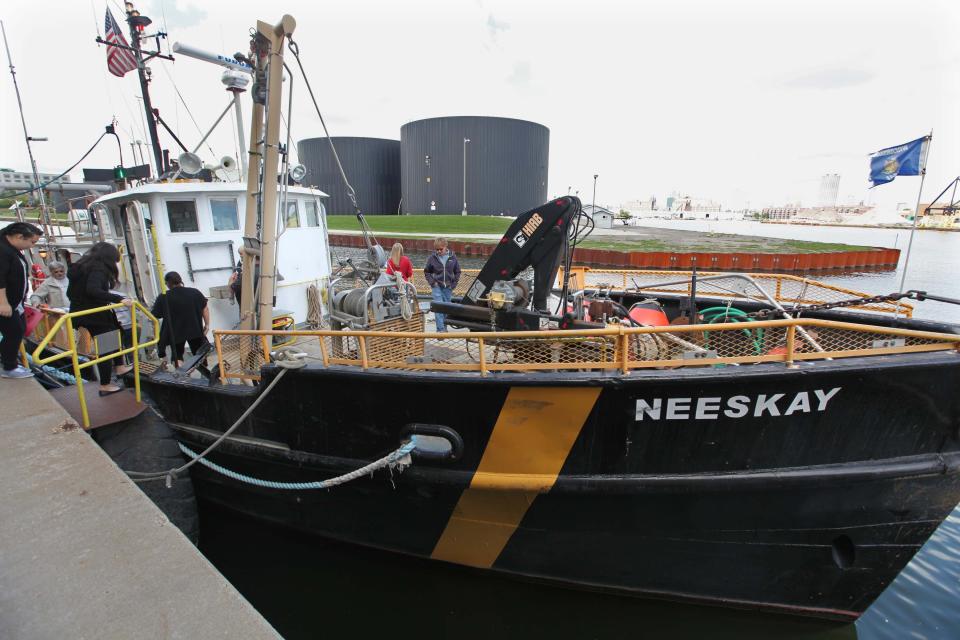UWM's Neeskay research vessel studies the Great Lakes year-round
The Great Lakes may seem like an limitless resource, but the world’s largest surface freshwater system faces major threats from pollution, climate change, invasive species and overexploitation.
And to understand and protect it, scientists need to be out on the water.
The University of Wisconsin-Milwaukee School of Freshwater Sciences has made its mark on Great Lakes research. It’s the only graduate school of freshwater sciences in the country and one of only three in the world.
UW-Milwaukee’s main research vessel, the Neeskay, is the only research vessel out on the lakes year-round.

Before the Neeskay started powering scientific expeditions in 1970, it was an Army T-boat used during the Korean War. Its name comes from the Ho-Chunk word for “pure, clean water.”
Scientists use the Neeskay to study algae blooms, invasive quagga and zebra mussels, and microbes that live out in the lakes. It’s also used to deploy buoys that monitor weather and lake characteristics, like temperature and nutrients.
But the Neeskay, along with a fleet of small boats, are only just the start. The university has been raising money since 2016 to build the Maggi Sue, which will become the most technologically advanced freshwater research ship in the country.
The Maggi Sue is expected to open many doors in understanding what’s going on out in the Great Lakes.
See the rest of Milwaukee's 100 objects
This article originally appeared on Milwaukee Journal Sentinel: UWM's Neeskay research vessel studies the Great Lakes year-round

